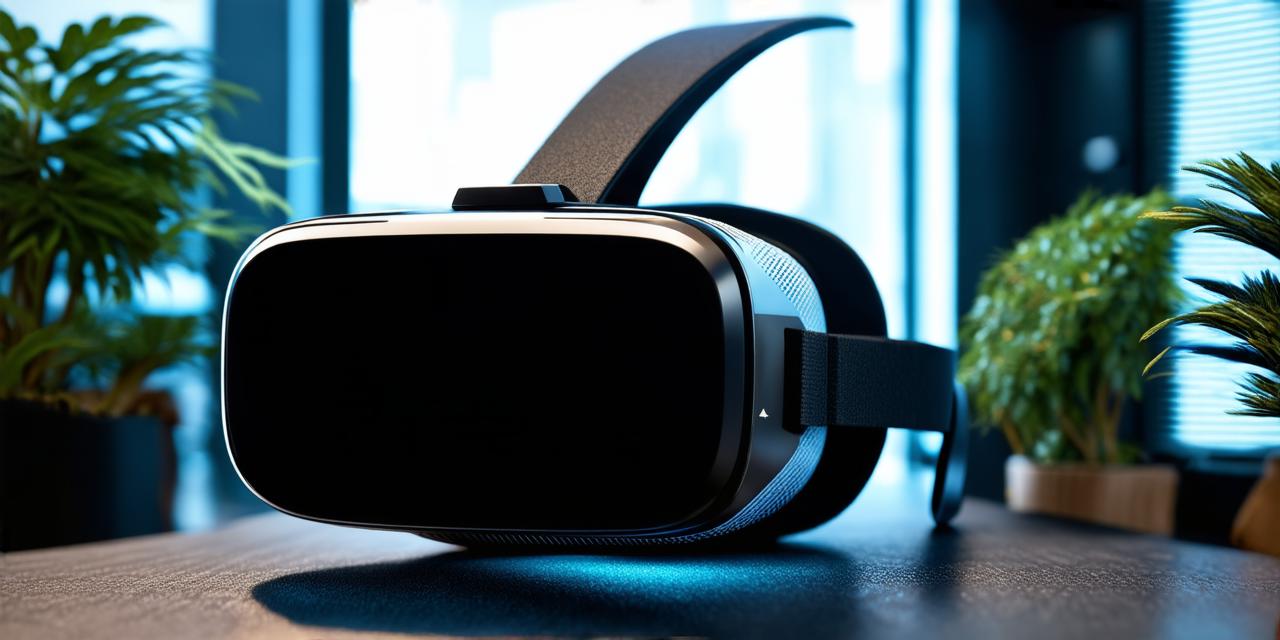<!DOCTYPE html>
The Immersive Qualities of VR
Virtual Reality is a unique technology that offers an immersive and interactive experience to users. The key feature that sets VR apart from other technologies is its ability to create an immersive experience, where the user feels like they are truly inside the virtual world.
This is achieved through various factors such as:
- Field of View (FOV) – The angle of vision in a VR headset determines how much of the virtual environment users can see at any given time. A wider FOV provides a more immersive experience and makes it easier for users to navigate the virtual world.
- Stereoscopic Displays – These displays create a 3D effect by showing slightly different perspectives from each eye, which creates depth perception and enhances the sense of immersion. For example, if a user looks at an object with their left eye, the object appears farther away than when they look at it with their right eye. This creates a more realistic sense of depth and distance in the virtual world.
- Haptic Feedback – This technology provides tactile feedback to users, making them feel like they are interacting with objects in the virtual world. For example, a haptic glove can provide resistance to simulate the feeling of holding an object. Haptic feedback can also be used to simulate other sensations such as vibration or force feedback.
- Motion Tracking – VR systems use sensors and cameras to track the user’s movements and translate them into the virtual environment. This enables users to move freely in the virtual world and interact with objects in a natural way. For example, a user can pick up an object by physically grabbing it, or they can walk through a virtual room by moving their body.
The Impact of VR on User Experience
Virtual Reality has the potential to enhance user experience in various ways, including:
- Increased Engagement – Users are more likely to engage with content when it is presented in an immersive and interactive manner. VR can increase engagement by providing a more immersive experience that captures users’ attention and keeps them engaged for longer periods.
- Improved Retention – Studies have shown that users retain information better when it is presented in a visual and interactive manner, such as through VR. This can be particularly useful in education and training applications, where retention of information is critical.
- Enhanced Empathy – Virtual Reality can provide users with an opportunity to experience different perspectives and cultures in a safe and controlled environment. This can enhance empathy and understanding among users from diverse backgrounds. For example, a user may be able to better understand the challenges faced by people with disabilities if they can experience life in a virtual world with a physical disability.
- Increased Productivity – VR can be used to simulate real-world scenarios, enabling users to practice and improve their skills in a controlled environment. This can lead to increased productivity and efficiency in industries such as manufacturing and construction. For example, an architect can design a virtual model of a building and test different layouts and designs without having to physically build them.
Best Practices for VR Development
To ensure that VR applications provide an optimal user experience, developers should follow best practices such as:
- Keep it Simple – While VR offers a wealth of possibilities, it is essential to keep the application simple and intuitive. Users should be able to navigate the virtual environment easily, and tasks should be straightforward to complete.
- Use Realistic Visuals – The visuals in VR applications should be as realistic as possible to create a more immersive experience. This includes using high-quality textures, lighting, and sound effects to simulate the real world.
- Provide Feedback – VR applications should provide feedback to users on their actions, such as whether they successfully completed a task or if they made a mistake. This helps users understand the consequences of their actions and improves their learning experience.
- Test Regularly – VR applications should be tested regularly to ensure that they work as intended and provide an optimal user experience. This includes testing the application with different hardware configurations, software versions, and user groups. For example, a VR game should be tested on different devices such as PCs, consoles, and VR headsets to ensure that it works seamlessly across all platforms.
In conclusion, virtual reality has the potential to enhance user experience in various industries by providing an immersive and interactive environment. The immersive qualities of VR include field of view, stereoscopic displays, haptic feedback, and motion tracking. VR can increase engagement, improve retention, enhance empathy, and increase productivity. To ensure that VR applications provide an optimal user experience, developers should keep it simple, use realistic visuals, provide feedback, and test regularly.
